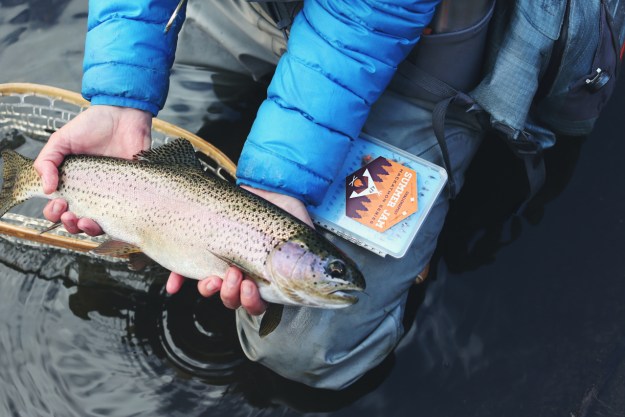Carrying around thousands of dollars in glass and electronics is tough. Now take it up a mountain or to a different country — even harder. We’ve rounded up the best camera bags to keep you comfortable and your expensive gear safe in the city, the mountains, or anywhere in between.
Peak Design Everyday Backpack

The non-zip version of the Everyday Backpack by Peak Design has been around for a few years now. With the latest release, the brand has launched a full zip version and an iteration of the original MagLatch version.
It has the brand’s same super-configurable FlexFold dividers inside, but the Everyday Backpack Zip boasts a 270-degree zipper that goes all the way up one side and down the other. The zip offers better weather protection and makes it harder for pickpocket hands to get inside your bag. Both versions of the backpack use new UltraZips with ultra-hight-molecular-weight thermoplastic to glue the zipper coils to the fabric tape for 20 times more tear strength than regular zippers.
Falling in line with the Climate Neutral ethos Peak Design strives for, the new bags have a 100% recycled, 400 denier weatherproof shell and are Bluesign-certified for a sustainable supply chain and manufacturing process.
Wandrd Prvke

For a simple, easy-to-use camera bag with urban-inspired design, The Wandrd Prvke (pronounced provoke) has you covered. The roll-top design expands an extra 5 liters so you can fit more snacks on the go. Multiple sizes of camera cubes fit inside the very weather-resistant shell. An Essential Camera Cube runs about $59 and can hold a camera and a couple of lenses. The Pro Cube can hold more for $99. Both the bag and camera cubes have a camera quick access through one side so you can stroll the streets of New York and take pictures at a moment’s notice.
The whole back of the pack opens to the camera cube for easy packing. A 15-inch laptop can slide out of the back panel as well for breezy airport checkpoints. For a slightly more adventure-ready package, accessory straps and a fully waterproof rainfly are available and tuck away in dedicated pockets.
Mountainsmith TanukLite

To satisfy your photo needs on a true off-road adventure, Mountainsmith teamed up with world traveler, surfer, and photographer Chris Burkard and came up with with the TanukLite 40. With 40 liters of space and tons of D-rings and webbing on the outside, you can pack all your gear and then some with this pack. TAN Series Kit Cubes fit nicely inside to organize camera gear, climbing clothes, or swim trunks for that secret swimming hole.
Thick shoulder straps keep the weight comfortable and a removable lid and waist belt let you configure the pack to your adventure. The lid can also clip to the shoulder straps and double as a small front pack for your camera, keeping it within easy reach. The TanukLite has an expandable storm collar for carrying that extra jacket and comfortably carries 50 pounds.
Lowepro BP ProTactic 350 AW II

With thousands of dollars of gear inside some camera bags, it’s important they are protected. The hard shell of the LowePro ProTactic accomplishes that in spades. The military-style ProTactic can adventure, fly, and travel while keeping that expensive glass inside safe.
Anything that doesn’t fit inside the ProTactic can be snapped onto the outside with a ton of Molle-style webbing and SlipLock hooks. Those same attachments can clip to the removable waist belt and just be used as a utility belt without the pack. The ProTactic comes in a 350 AW version that fits a 13-inch laptop well and a 450 AW version for the 15-inch laptops.
Shimoda Action X50

Many photographers slowly try dozens of camera bags over the years looking for the perfect one. For the adventure photographer, the Shimoda Action X series might be the ideal set. Available in 30-, 50- and 70-liter sizes, the Action X is focused on the hiker, skiers, and mountain bikers out there who need to have a camera with them. The roll-top design expands for extra space, and the padded back panel swings open when you need access to your whole kit. A quick-access door in the side lets you grab your camera when your ski buddy starts cartwheeling through the powder.
Compression straps on the sides and back can hold tripods or skis. A removable helmet holder on the back keeps everything together. If you’re not in the backcountry and don’t need the support, the waist belt pops out easily. The shoulder straps adjust up and down in three sizes and can be swapped out for women-specific straps or a more padded set.
A Kickstarter campaign has already been fully backed. If you sign up now, deliveries are slated for December 2019.
Nomatic X Peter McKinnon Camera Bag Pro

Traveling with camera gear is a whole other list of requirements the perfect camera bag must have and most don’t carry enough. Photographer and vlogger Peter McKinnon was sick of compromising. He got together with Nomatic to create the perfect travel and photography bag.
The pack itself has specific sections for everything. If you like packing the same way every time, this bag is for you. Quick Velcro dividers hold camera bodies and lenses. Slots also fit larger items like drones and battery packs. Optional padded cases are made specifically for filters, camera batteries, and camera cards and slide perfectly into a slot in the bag. Another soft-shelled cube in the top of the bag expands into a day pack with a slot for one camera and lens.
The whole front panel of the bag opens for space for clothes. With a quick zip, it expands from 35 liters up to 42 liters when you need a couple more days’ worth of of space. The Kickstarter blew past its $100,000 goal with $2.2 million in orders, and the bag is now on Indiegogo with nearly $30,000 in pre-orders on that platform.


